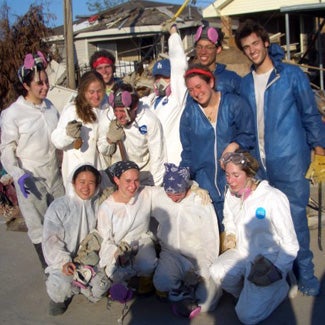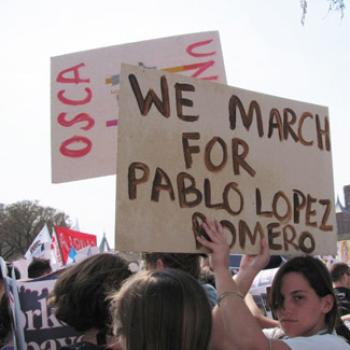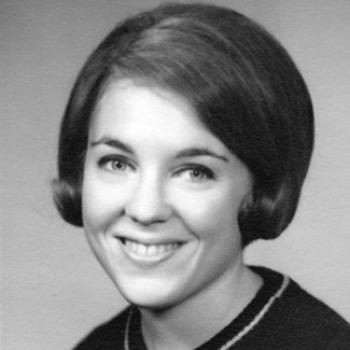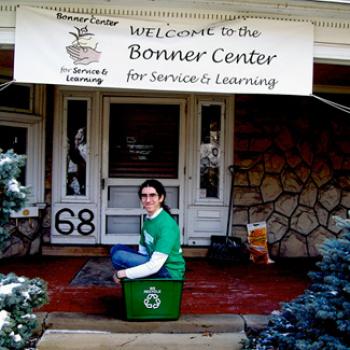On volunteering in post-Katrina New Orleans
Colin Jones ’08
“The values of service, hard work, and solidarity in the pursuit of justice that were instilled by Oberlin pushed us forward.”

As I prepared to return to Oberlin for my sophomore year in 2005, I recall an eerie and distant feeling of uncertainty. The news came in from New Orleans - a remarkable storm was coming and its path was catastrophic. I struggled with dread at the beginning of the semester, what was supposed to be a time of excitement. Shockwaves emanated from that multifaceted city on the water, and from those less famous but just as impacted - the casino towns of Mississippi (the South’s answer to the Riviera), the oil wells, or the hidden South, of porch-sitters and tiny white churches. This hurricane opened the door to an America none of us were prepared to see.
It was clear that Oberlin students and the wider community would not stay on the sidelines at a historic moment of tragedy. It took less than a semester for the first Oberlin volunteer teams to put their lives aside and do what we could. I, like many others, entered the volunteer lines somewhat haphazardly. The distinction between follower and leader was blurred as these teams, often woefully unaware of each other, began to plan what ended up as a delegation of roughly 75 Obies partnering with the grassroots relief agency Common Ground. We were friends, we were vanmates, and we didn’t know for sure what it was we were getting into.
The road was rich for us to discover much that had slipped into the shadows of stereotypes. There were hardly any satisfactory vegetarian options between Nashville and Birmingham, but there were a plethora of Waffle Houses. We gained an appreciation for each other, and a test of what the values we shared really meant. It is hard to overemphasize the importance of the road, but it was always defined by our end goal, to cross the glimmering water and enter New Orleans. What greeted us there hinted at a new reality, where the trees bent sideways in greeting, until finally giving way to the skeleton car lots and twisted amusement rides.
Our destination seemed to be the only living building in the neighborhood as we stopped well short of the glamorous part of the city. St. Mary’s was a three-story school where the locals fled to in search of shelter when the storm came. We entered the building with a mix of exhaustion, wonder, and elation, which was only partially deflated by metal cots and portable showers. It was a mix of utopian summer camp and hardy workers’ colony as we ventured up those stairs for the first time with joy. The days in cramped vans softened the blow that we would be doing even more bonding against our will, sleeping 25 to a room. Understanding the suffering that had occurred there, we were able to reinvigorate the space in our own way.
We woke up early for each workday with Common Ground. I won’t forget the assortment of vagrants, drifters and starry-eyed activists who had landed there. Especially not Blade, a tattooed drifter who ensured with excessive noise and force that we were up an hour before necessary for slop and morning meeting. We would hear testimonials, poems, rants, and once and a while practical information regarding the day’s assignments, issues in the facility, instructions on tools, toxins in the wrecked houses, or the burgeoning lice epidemic.
We stayed in work teams of twelve. There was plenty to be done in the headquarters or the distribution center in the Upper Ninth. However, nothing came close to strapping on full tyvec protective suits and making first contact with a rattled home in the Lower Ninth. I recall the dislocation of this reality where some homes were literally on top of one another. The arrested breathing through our masks, the hot sun, and the formidable site of a home, a family’s history and possessions within it turned upside down - the sights could easily worsen our fatigue and reawaken despair. It begged the question: what could this effort of ours mean?
The answer came when we worked side by side with a man picking up these pieces of his life in the face of complete devastation. We saw his smile at our efforts beside him, and heard joy in hearing what his wife (far away in Texas) would say when she knew the house was clear. I had a laugh when he told me that my hair was so big that it reminded him more of 1970 than the new millennium. We knew what our efforts meant when one team traveled a hundred miles to return love letters and personal artifacts from 1955 that we found and gathered like treasure. We shared in an irreplaceable memory by restoring its physical manifestation to one devastated family.
What we learned on the trip from Oberlin to New Orleans can hardly be expressed in words, but I know for certain that it changed my world-view, my perceptions, and my life. The values of service, hard work, and solidarity in the pursuit of justice that were instilled by Oberlin pushed us forward. We were all eager to share and reinforce this experience when we returned to campus, unable and unwilling to forget what we learned in New Orleans. This was the beginning of service projects and organizations that to this day venture out each year from Oberlin to the Gulf Coast. These efforts have brought us together with communities in Mississippi, Louisiana and with like-minded volunteers from around the country. Hurricane Katrina changed New Orleans, Oberlin, and me: it led me to a lifetime of community service.
Tags:
You may also like

On working with IWP
“For two months, I have been in charge of the Oberlin region, working with two other student interns to teach English classes, serve as interpreters, and prepare for court cases for undocumented and...
Cynthia Malasky ’11

On the emergence of political awareness
“Before coming to Oberlin, I had never seen a demonstration or sit-in or even considered challenging government or college administration policy.”
Ruth Adler Rosensweig ’68

On his work at the Bonner Center for Community-Engaged Learning, Teaching, and Research
“Working for eco-social transformation in Oberlin is endowing me with a far deeper understanding of many things, including how to write a grant proposal, build a project vision, and seek to change...
David Fisher ’12